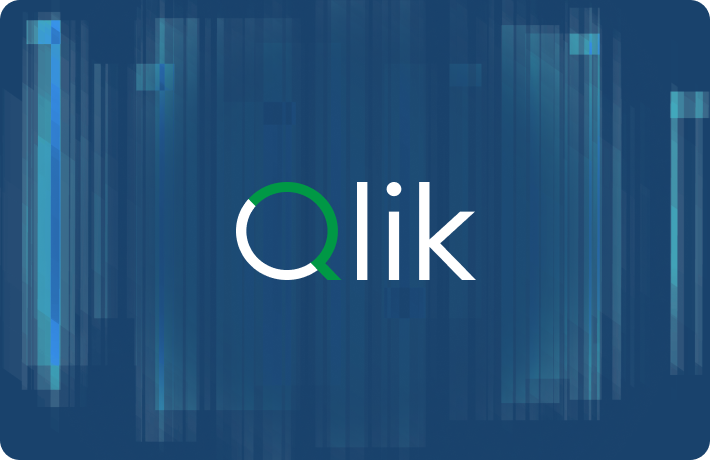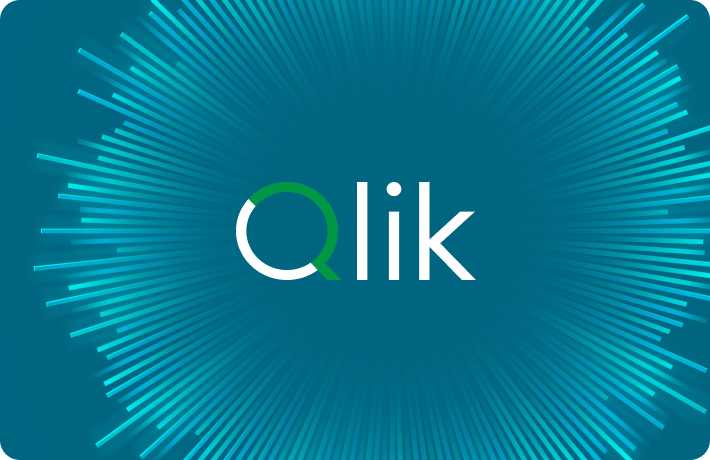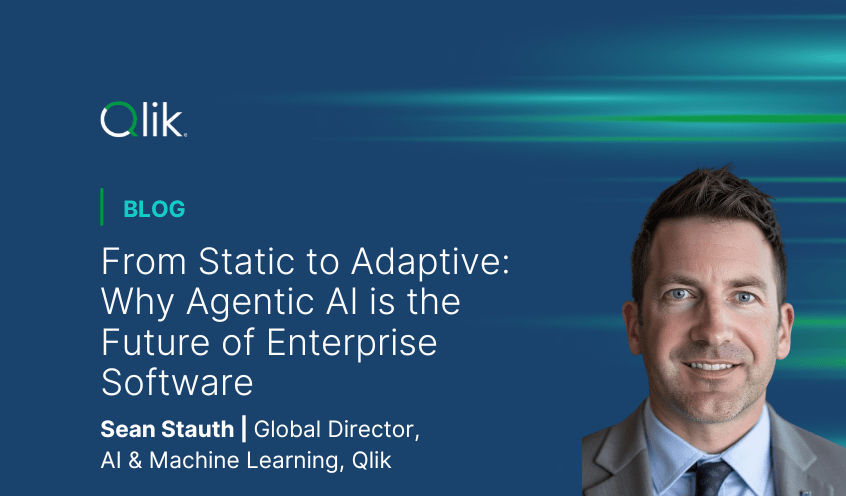Over the first half of this year, I’ve had the unique privilege of traveling across EMEA, APAC, and the US, leading our global Agentic AI workshop series. From London to Singapore to Mumbai, I’ve had a front-row seat to how enterprises—across industries and continents—are rethinking what software can be in an age of intelligent systems. And I can confidently say: the era of Agentic AI has arrived.
At these events, we explored the evolution of enterprise AI, first predictive AI, then generative AI, and now Agentic AI. Agentic AI is software capable of autonomously sensing changes in its environment, reasoning through complex situations, making decisions, and acting on them—continually adapting to dynamic business conditions. Each leap has been transformative, but none as fundamentally game-changing as the one we’re stepping into now.
But what makes Agentic AI game changing?
The short answer: For the first time, we’re not just making software smarter—we’re making it adaptive. Static, rules-based software cannot solve emerging enterprise challenges alone.
We’re seeing the capabilities of foundation models explode. They’re faster, cheaper, and exponentially more intelligent than they were a few years ago. Which means the strategic value is no longer in just the models themselves—but in how they’re applied. That value sits in the application of the technology: vertical, domain-specific, and tailored to dynamic workflows. Capabilities like reasoning and decision-making form a new intelligence layer that can now invoke tools and resources – all aimed directly at business-critical applications and workflows. These aren't traditional, deterministic, rules-based systems. They are intelligent, agentic systems—driven and orchestrated by AI.
This transformation is reshaping the questions enterprises ask and expanding what’s possible with enterprise software. Business has always been fast paced, competitive, and messy. Economic realities such as labor markets, consumer behaviors, distribution channels are in constant flux. Enterprises are now asking themselves a fundamental question: Can we respond faster? Can we be proactive? How do we move from static software to dynamic systems that evolve with our business?
And this new opportunity is galvanizing the industry.
The Power of Agentic Systems
They face simultaneous pressures on product innovation, go-to-market execution, and a changing labor market and workforce demands:
On the product side, they need to continuously identify, test, and refine offerings with clear value props and strong margin profiles. But those products must evolve as customers do - sometimes weekly - as competitors drop counter-offers. New product offerings must both be innovative and hit margin targets.
On the sales side, they manage a multi-channel strategy involving global banks, regional partners, and an in-house direct sales force. Each has different demands, financial returns, and market pressures. At the same time, competitors are looking to press advantage on many of the same to-market-channels. This creates constant pressure to maximize sales incentives, prove value prop, and expand relationships.
And on the workforce side, a high-attrition environment leads to constant retraining, loss of knowledge, and variability in sales execution. Sales leaders must hit performance benchmarks in an environment with high unpredictability.
Their world isn’t static. It’s a living system—a constant flux of competition, attrition, demand signals, partner friction, and shifting risk exposure. No dashboard, no single predictive model, no human-built workflow can keep up.
Enter Agentic AI
This is exactly where Agentic AI shines.
Instead of monolithic systems or rigid workflows, imagine a network of intelligent agents, each with a specific role, acting autonomously yet collaboratively - like a digital ecosystem, constantly sensing, learning, and acting.
The vision with Agentic AI is to break down key workflows across a series of agents, each responsible for a set of tasks, and held to account by specific metrics. These are composite AI systems, much more powerful than simple chatbots and answer prompts. Each agent may include multiple foundation models, including purpose trained LLMs and Small Language Models (SLMs) for specific tasks, orchestration workflows and knowledge bases.
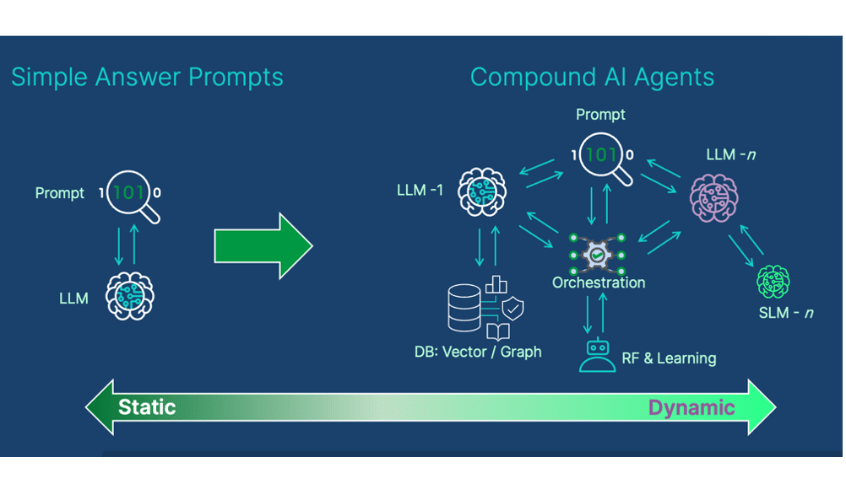
For this customer scenario, here are potential agent examples:
Marketing Agent: Detecting shifts in demand signals across segment and channel, the agent is set to optimize customer acquisition and brand awareness. Measured by Cost per Acquisition (CAC), Channel Efficiency,andLead-to-qualified-opportunity rates.
Revenue Optimization Agent: Incorporating pricing and demand signals with new product features, the agent is set to maximize revenue and margin through real-time pricing, bundling, and promotion strategies. Measured by feature uptake, sales volume, and revenue per transaction.
Sales Productivity Agent: Recommending next-best actions and just-in-time training for reps based on real-time opportunity data and behavioral signals, the agent is set to improve seller effectiveness, onboarding, and retention. Measured by per-rep quota attainment, sales cycle velocity, rep time-to-ramp, and attrition.
Risk Management Agent: Integrating real-time data from fraud signals, market shifts, and portfolio trends, the agent is set to balance growth with regulatory and financial risk exposure. Measured by loss-ratio, risk-adjusted returns, and other compliance metrics.
Customer Service Agent: Integrating structured and unstructured data from marketing, product, and sales, the agent provides critical information to customer service reps and end-customers to drive loyalty and reduce churn. Measured by customer retention rate, net promotor score (NPS), and call resolution times.
Each agent can operate within its own domain - but the true breakthrough comes when these agents form a connected, multi-agent system (MAS), acting autonomously yet collaboratively. When orchestrated together, these agents enable the organization to proactively adapt strategy, innovate more rapidly, and maximize customer lifetime value.
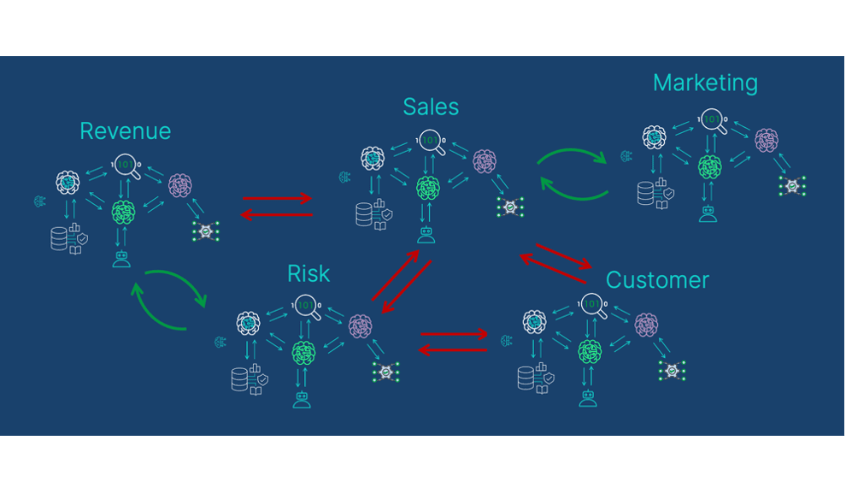
And that is the customer’s long-term vision: is to create a multi-agent ecosystem, where agents communicate and coordinate across business functions:
The Marketing Agent detects demand shifts and signals the Revenue Agent to test new pricing.
The Revenue Agent collaborates with the Risk Agent to ensure compliance and safe growth.
The Sales Agent uses this intelligence to tailor pitches and improve conversion, while the Customer Service Agent feeds real-world insights back to marketing and product.
These emergent architectures don’t need to follow a static script. They learn, coordinate, and adapt. They form a dynamic, living system - mirroring the business they serve.
Yes, It’s Complex. And Yes, It’s the Future.
This vision is both ambitious and futuristic. But, it’s also exactly what modern enterprises need - and what many are starting to prototype today.
This financial services customer isn’t deploying this overnight. With Qlik’s help, they’re building toward it step by step - because these systems require new thinking, new tooling, and new data foundations.
Qlik’s Role on This Journey
The Agentic AI landscape is advancing rapidly, and leading organizations know the time to act is now. At Qlik, our vision is focused on two critical enablers for our customers: a trusted data foundation and a powerful agentic AI experience.
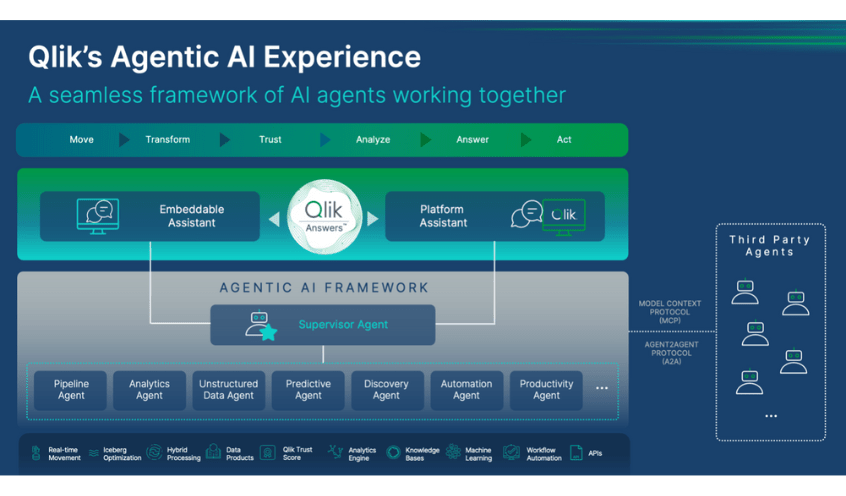
Qlik sits in a unique position with a complete, independent, end-to-end data and analytics platform. Our goal is to build an agentic AI foundation for platform – a network of intelligent agents that work together to understand context, reason through tasks, and take action. This includes assistants and agents that reflect human-like decision-making and task execution.
Our generative AI assistant, Qlik Answers, will serve as the natural language interface for this ecosystem—accessible both within the Qlik platform and as embeddable, customer-built assistants. Users can interact with Qlik Answers for insights from their data, guidance within our platform, and automation of key tasks and workflows. Customers can also build domain-specific assistants—easily deployable and embedded into their operational workflows, to solve specific business problems.
These assistants will tap into our agentic framework: a network of specialized agents across analytics, automation, unstructured data, anomaly detection, data pipelines, productivity assistance and more. A unique supervisor agent orchestrates them—interpreting intent, breaking down tasks, and coordinating execution across agents.
Most importantly, we don’t just seek to use AI agents within Qlik – we are building our platform to be the trusted source for all AI agents when they need data or analytical calculations. Qlik will serve as an agentic data intelligence layer for an organization—enabling agents across systems and vendors to request, access, and act on trusted insights. With support for standards like MCP and A2A, any third-party agent can harness the unique power of Qlik to drive the best outcomes across their enterprise.
After six months of seeing this shift play out across industries and regions, one thing is clear:
Static systems can’t keep up. The future belongs to software that learns, adapts, and collaborates.
And Agentic AI is how we’ll get there.
We’d love to hear your perspective on this journey. If you’re thinking about how your organization can build toward dynamic, AI-driven systems, let’s talk.
In this article:
AI



